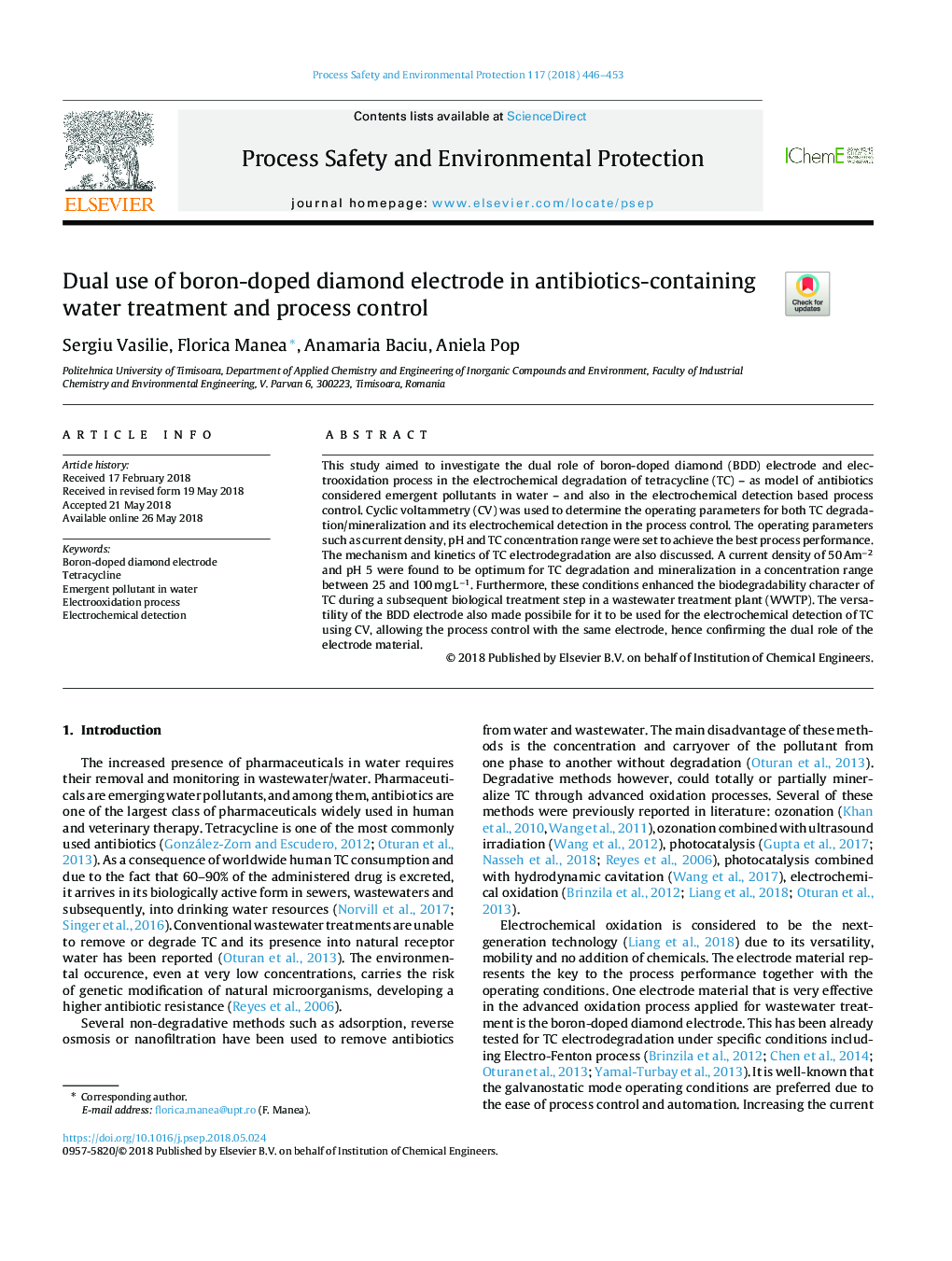| Article ID | Journal | Published Year | Pages | File Type |
|---|---|---|---|---|
| 6974054 | Process Safety and Environmental Protection | 2018 | 8 Pages |
Abstract
This study aimed to investigate the dual role of boron-doped diamond (BDD) electrode and electrooxidation process in the electrochemical degradation of tetracycline (TC) - as model of antibiotics considered emergent pollutants in water - and also in the electrochemical detection based process control. Cyclic voltammetry (CV) was used to determine the operating parameters for both TC degradation/mineralization and its electrochemical detection in the process control. The operating parameters such as current density, pH and TC concentration range were set to achieve the best process performance. The mechanism and kinetics of TC electrodegradation are also discussed. A current density of 50 Amâ2 and pH 5 were found to be optimum for TC degradation and mineralization in a concentration range between 25 and 100 mg Lâ1. Furthermore, these conditions enhanced the biodegradability character of TC during a subsequent biological treatment step in a wastewater treatment plant (WWTP). The versatility of the BDD electrode also made possibile for it to be used for the electrochemical detection of TC using CV, allowing the process control with the same electrode, hence confirming the dual role of the electrode material.
Related Topics
Physical Sciences and Engineering
Chemical Engineering
Chemical Health and Safety
Authors
Sergiu Vasilie, Florica Manea, Anamaria Baciu, Aniela Pop,
